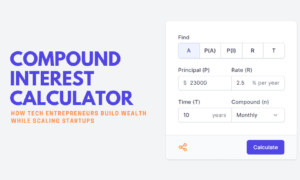Data analytics has become crucial to business operations in today’s data-driven world. As a result, the demand for skilled data analysts has skyrocketed in recent years, making it a highly competitive job market. It’s essential to have a robust data analytics portfolio to stand out to potential employers.
A data analytics portfolio showcases your skills, experience, and knowledge in data analysis. It provides a tangible representation of your work and demonstrates your ability to handle real-world data analysis projects. By building a strong data analytics portfolio, you can differentiate yourself from other candidates and increase your chances of landing a job.
According to recent studies, the demand for data analysts is expected to grow in the coming years, with an estimated 21% job growth rate from 2021 to 2031. It means there will be plenty of opportunities for skilled data analysts, but competition for these roles will be high. By building a strong data analytics portfolio, you can position yourself as a top candidate for these in-demand roles.
What is a Data Science Portfolio
A portfolio of projects and associated work showcasing your data analysis knowledge and talents is a data analytics portfolio. It gives prospective employers concrete proof of your skills and highlights your experience. In the competitive data analytics industry, having a great portfolio may help you stand out and improve your chances of getting hired.
It’s essential to include a variety of projects that showcase different skills and techniques to build a robust data analytics portfolio.
Here are some types of data analytics projects that can be included in a portfolio:
Data Cleaning and Preparation: This project involves gathering raw data for analysis by cleaning and converting it. It can demonstrate your aptitude for working with massive datasets, validating and cleaning data, and setting it up for analysis.
Data Visualization: For this project, data will be visualized using graphs, charts, and other tools. It can demonstrate your capacity for effective insight dissemination and data-driven judgment.
Exploratory Data Analysis: Analysing and examining data to find patterns and links is the goal of this task, known as exploratory data analysis. It might demonstrate your aptitude for deriving insights from data using statistical methods and tools.
Predictive Modeling: This initiative employs data analytics to inform corporate choices and boost operational effectiveness. It can demonstrate your capacity to use data analytics in actual business settings and benefit stakeholders.
Business Intelligence: This project uses data analytics to drive business decisions and improve operational efficiency. It can showcase your ability to apply data analytics to real-world business and deliver value to stakeholders.
You may showcase your adaptability and depth of data analytics knowledge by incorporating a number of these sorts of projects in your portfolio.
Things to keep in mind before making a portfolio
Building a good portfolio requires knowing your data analytics skills. You can demonstrate your abilities and set yourself apart from other applicants by concentrating on your strengths. The following advice can help you determine your data analytics strengths:
Reflect on your previous projects: Consider the data analytics tasks you’ve completed. What assignments did you succeed at? What skills did you bring to those projects? It helps you determine the areas in which you naturally excel.
Take online assessments: You may learn more about your data analytics strengths by taking a few online tests. You may find out your strengths and shortcomings in various data analytics areas by taking a series of online examinations, such as those that are part of the IBM Data Science Professional Certificate.
Seek feedback from others: Request comments from your peers or coworkers on your work. What do they consider your strongest suit? What areas do you need to work on? It might assist you in locating potential blind spots or opportunities for development.
Consider your education and training: Your data analytics education and experience. What were the things you accomplished well? What education or training have you received pertinent to your data analytics strengths?
You may stand out to potential employers by customizing your portfolio to highlight your data analytics abilities. Additionally, by concentrating your job search on positions that match your skills, you’ll increase your chances of landing a position you’re excited about.
Building a Data Science Portfolio
Once you have identified your strengths in data analytics, it’s time to start building your portfolio. Here are some steps you can follow to build a robust data analytics portfolio:
Introduce yourself with an interesting bio: It includes your experience and education and how you can help a business to grow. Adding a personalized touch to grab attention and stand out is also advisable.
Identify the projects to include: Look back at your past projects and identify the ones that best showcase your skills and expertise in data analytics. Aim for various projects demonstrating your ability to work with different data sets and tools.
Collect and clean the data: Ensure the data is organized and tidy to demonstrate your proficiency in working with real-world data.
Choose the right tools and techniques: Use the proper tools and methods for each job, and explain your decisions and the thinking processes that went into them. It exhibits your capacity for critical thought and problem-solving in data analytics.
Create visually appealing visuals: Visuals are a terrific approach to highlight your work and make it more interesting for prospective employers. To present your facts and conclusions aesthetically pleasing, use graphs, charts, and other visual aids. Be sure to maintain clear, readable imagery.
Explain your process and results: This is the most important step. Give a thorough breakdown of your approach and the outcomes you attained for each assignment. Describe your strategy for solving the issue, methods, and investigation conclusions. It exhibits your capacity to persuade people via excellent communication and data-driven insights.
Choose a clean and simple design: Maintain an easy layout and color choice for the procedure. Potential employers will find browsing your portfolio and concentrating on your work simpler.
Organize your projects: Organize your projects logically, using prominent titles and descriptions. It makes it simpler for prospective employers to comprehend your job and obtain the necessary information.
Using this article’s advice and best practices, you may build a robust data analytics job portfolio demonstrating your abilities and distinguishing you from other job seekers.

Additional Tips for Building a Strong Portfolio
In addition to the tips already mentioned, here are some additional tips for building a strong data analytics portfolio:
Diversify your projects: Include various tasks demonstrating your ability to deal with diverse data types, tools, and methodologies. It might demonstrate your capacity for flexibility and adaptation as a data analyst.
Focus on impact: Accentuate the influence of your contribution on the project or organization. It might involve generating more money, streamlining processes, cutting costs, or achieving other quantitative outcomes.
Use real-world data: To show that you can handle chaotic, complicated, and unstructured data, including real-world data in your projects wherever you can. It can demonstrate your capacity to draw insightful conclusions from facts.
Share your code: If you utilized programming in your work, share it with prospective employers. It can show off your programming prowess and give others an idea of how you tackle problems.
Seek feedback: Request feedback by sharing your portfolio with colleagues or mentors in the field. It will enable you to polish your work and demonstrate your capacity for taking in and using criticism.
It’s critical to study and improve your portfolio constantly. Maintaining up-to-date with the newest tools, methodologies, and trends is essential since data analytics is continually growing. You may show dedication to the subject and capacity for flexibility by regularly studying and upgrading your portfolio.
Conclusion
In conclusion, creating a good data analytics portfolio is essential for making an impression on potential employers and showcasing your expertise in the industry. Defining your portfolio, recognizing your talents, and presenting your work persuasively is crucial. To establish a great portfolio, it’s essential to vary your projects, emphasize impact, share your code, solicit comments, and always learn and update your portfolio.
Using these suggestions, you may create an eye-catching portfolio demonstrating your abilities and expertise to potential employers. Take advantage of the market’s current need for data analysts by starting to grow your portfolio immediately.



































